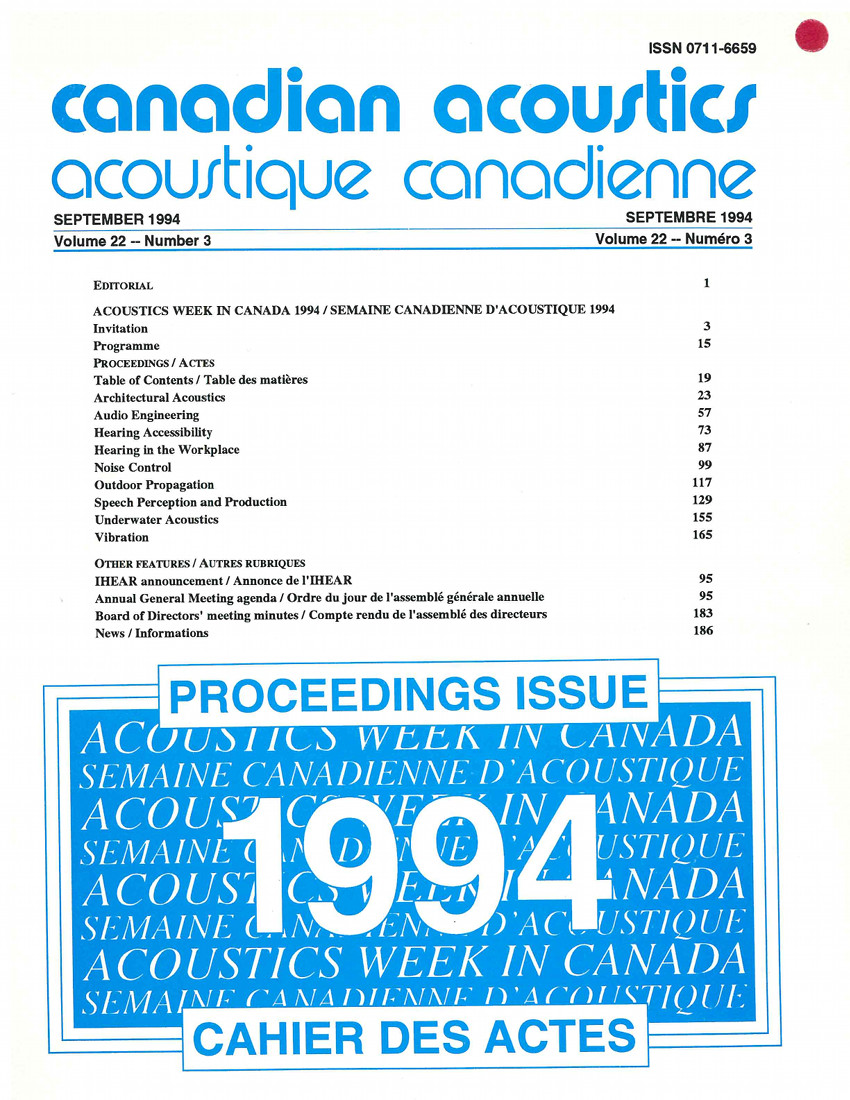Numerical modelling of wood frame joints having fire stops
Keywords:
architectural acoustics, structural acoustics, wood, net air borne sound isolation, flanking path, fire stops, bending waves, structural vibration, airborne acoustic energyAbstract
In a companion paper (1994) the degradation of the net air borne sound isolation resulting from the flanking path caused by a special class of fire stops was investigated. This paper examines a simple model for the propagation of bending waves through the joint involving a fire stop constructed by continuing one of the room's surfaces across or under the nominally separating element. It shows a simplified section through the partition wall and the end wall that will be modelled. Due to the symmetry of the joint it can be viewed as a pair of corner joints coupled by an element (i.e., the fire stop) having a unique bending stiffness. In the simplified model presented, only the transverse component of the surface velocity is considered as it is this motion (i.e., that caused by bending waves) that will be, by far, the most effective at converting structural vibration to airborne acoustic energyAdditional Files
Published
How to Cite
Issue
Section
License
Author Licensing Addendum
This Licensing Addendum ("Addendum") is entered into between the undersigned Author(s) and Canadian Acoustics journal published by the Canadian Acoustical Association (hereinafter referred to as the "Publisher"). The Author(s) and the Publisher agree as follows:
-
Retained Rights: The Author(s) retain(s) the following rights:
- The right to reproduce, distribute, and publicly display the Work on the Author's personal website or the website of the Author's institution.
- The right to use the Work in the Author's teaching activities and presentations.
- The right to include the Work in a compilation for the Author's personal use, not for sale.
-
Grant of License: The Author(s) grant(s) to the Publisher a worldwide exclusive license to publish, reproduce, distribute, and display the Work in Canadian Acoustics and any other formats and media deemed appropriate by the Publisher.
-
Attribution: The Publisher agrees to include proper attribution to the Author(s) in all publications and reproductions of the Work.
-
No Conflict: This Addendum is intended to be in harmony with, and not in conflict with, the terms and conditions of the original agreement entered into between the Author(s) and the Publisher.
-
Copyright Clause: Copyright on articles is held by the Author(s). The corresponding Author has the right to grant on behalf of all Authors and does grant on behalf of all Authors, a worldwide exclusive license to the Publisher and its licensees in perpetuity, in all forms, formats, and media (whether known now or created in the future), including but not limited to the rights to publish, reproduce, distribute, display, store, translate, create adaptations, reprints, include within collections, and create summaries, extracts, and/or abstracts of the Contribution.


